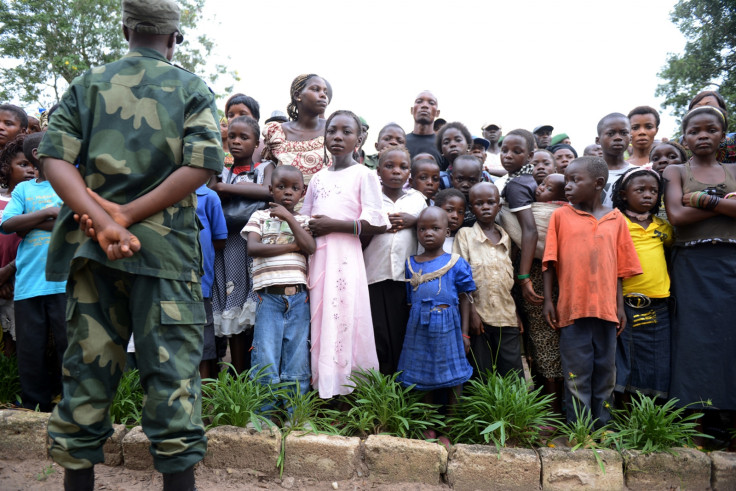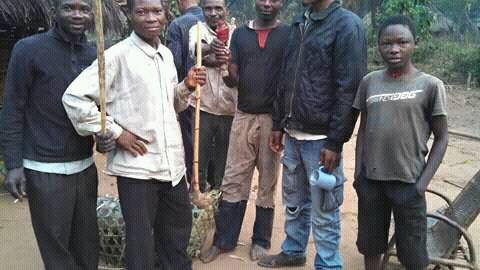DRC's Kasai violence: Why there is a risk an old conflict with ethnic undertones may intensify
IBTimes UK deciphers the causes of the present round of violence in Congo's new flashpoint.

The United Nations' peacekeeping mission to the Democratic Republic of Congo (DRC) this week trained tribal chiefs on ethnic conflict management techniques in the nation's restive Kasai-Central, following nine months of deadly violence.
The brutal conflict in Congo's previously peaceful Kasai region erupted in August 2016 when government forces killed Kamuina Nsapu, a tribal chief who was leading a rebellion against President Joseph Kabila. Kabila's attempts to remain in power beyond the legal limit set by the constitution have rocked the already fragile nation.
As it becomes increasingly unlikely that elections will be held in a timely manner at the end of this year and clashes between the Congolese army (FARDC) and Kamuina Nsapu factions have now spread to five provinces, there is a real risk this conflict may intensify.
"When any group feels it is coming under pressure or being attacked, it will form its own community defense group – vigilante – and seek to respond," Jordan Anderson, Africa Analyst at business information provider IHS Markit, exclusively told IBTimes UK.
Militant groups linked to communities stepping up their activities, because every side is scared of losing in the elections, is somewhat normal around Congolese elections.
"As long as the elections are delayed, we will continue to see that effect where people think they need their own group and politicians have to increase their connections with them. The anger that is being felt in Kasai is directly linked to what is going on nationally."
In the Kasai context, where the deeply-rooted conflict is polarised along ethnic lines and local grievances are extremely complex, a constellation of militant groups are increasing their activity.
"In the 1960s the Luba-Lulua [ethnic groups] was the big ethnic confrontation in the Kasai. In the past few months, the Tshokwe [ethnic group] have been brought in as well. There have been Kamuina Nsapu elements showing up in town, especially in the ex-Katanga region, and claiming they were there to defend the Lulua against the Tshokwe."

Witnesses of recent massacres in the province's capital, Kananga, have told IBTimes UK about the growing ethnic stratification of the conflict, which mainly opposed the regime's forces and suspected Kamuina Nsapu militiamen.
"To an extent, it benefits the government to have some of these groups turning on each other. There's likely been a certain amount of fracturing within the Kamuina Nsapu movement as well, with some fractions functioning fairly independently of each other," Anderson explained. "The more that you have these groups appearing, the more you have other local groups appearing to combat Kamuina Nsapu, which prevents it from being a large unified movement that would threaten the government in Kinshasa."
According to Anderson, it would be very difficult for Kamuina Nsapu to take territory in Kinshasa, simply because of poor transport links and because they are not armed in such a way where they could challenge the army.
Civilians in Kasai have described how the Kinshasa government is moving in police and soldiers from other parts of the country to carry out alleged attacks on neighbourhoods, which the government typically justifies as ''search operations''.
"It is not surprising. This is simply because they know the troops won't have any loyalty or particular affection for the people who are there," Anderson said.

"This is an aggravating factor, which helps boost support that the various Kamuina Nsapu groups are getting against the government, because it is very unpopular when the government brings in ethnically different troops who may not even share a common language with the people in the neighbourhood they are doing searched in – depending on those people speaking Lingala, which they may not do."
This became evident when dozens of police officers, who were beheaded in the Kasai, were from outside the Kasai region. Some were freed because they spoke the local Tshiluba.
"This will increase the support further for Kamwuina Nsapu groups and we will see them continuing to carry various attacks against government soldiers, government offices, assets and personnel of the Catholic Church for the reason that the Church is overseeing the [political] deal."
In April, IBTimes UK reported how priests had been forced to flee after unidentified militiamen attacked buildings belonging to the Catholic church in Luebo town in Kasai.
Risks of aggravation of the ethnic conflict hang on the extent to which the violence is blamed on any certain group on Congolese social media, hate speech being spread, or local politicians' announcements.
For Anderson, this also means there is a risk an ethnically charged conflict in the Kasai could spill over into neighbouring resource-rich Katanga, where there is already widespread anger following the delay in elections.
While Kabile has historical connections to the Luba in Katanga, he has lost much of their support after they distanced himself from the head of state because, they claim, he failed to bring jobs, roads and development that he was supposed to bring in Katanga.
The conflict in Kasai region has displaced more than one million people around the DRC, and tens of thousands into neighbouring Angola.
© Copyright IBTimes 2025. All rights reserved.






















